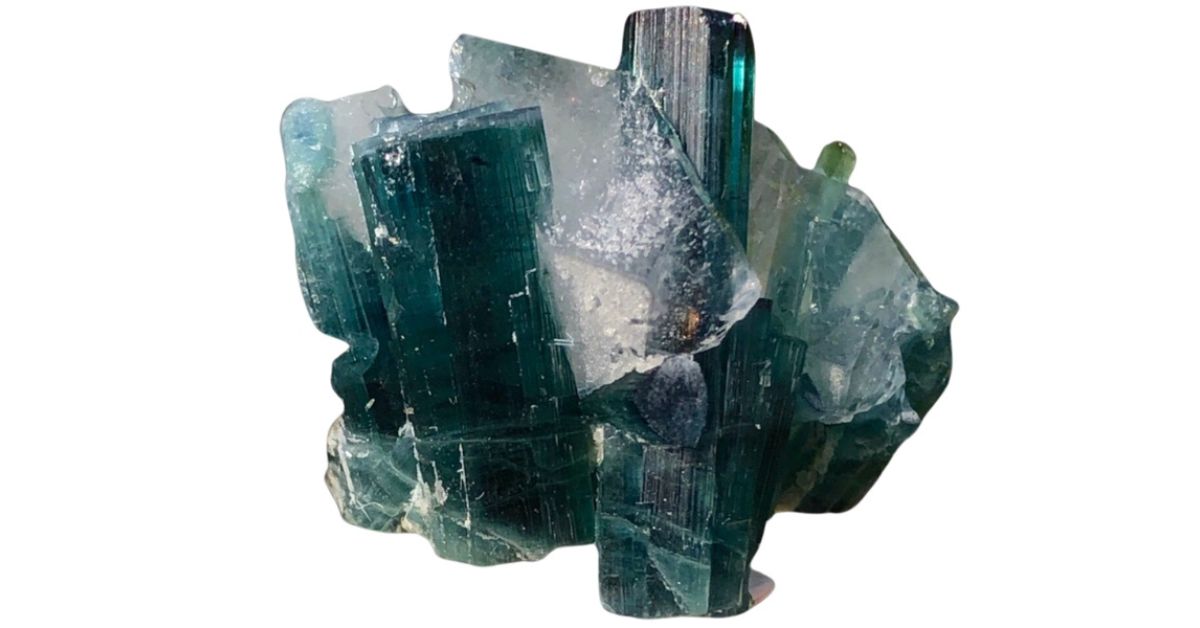With their beautiful colors of blue and green, teal crystals look like little chunks of the ocean set in stone. There’s more to these gems than meets the eye. They range from the palest blue to deep, bright turquoise.
Some are hidden deep in the earth in strange places, while others are made in the sea over thousands of years.
These gems have interesting histories and can be used in different ways. Some people fashion them into trinkets to feel more connected to the earth.
Some people put them in their homes to make them feel calm. They’re more than just stones; we can keep them close to us as a piece of nature.
We’re excited to share our list of favorite teal crystals in this article. We’ll look into their pasts, their meaning, and why so many people find them important. Get ready to discover the fascinating world of teal gems!
Our Favorite Teal Crystals
We look into the world of teal crystals and show you our top choices that stand out for their beauty and unique qualities. With their beautiful shades of blue-green, each of these gems has a special place in the hearts of crystal lovers and fans.
Blue Topaz
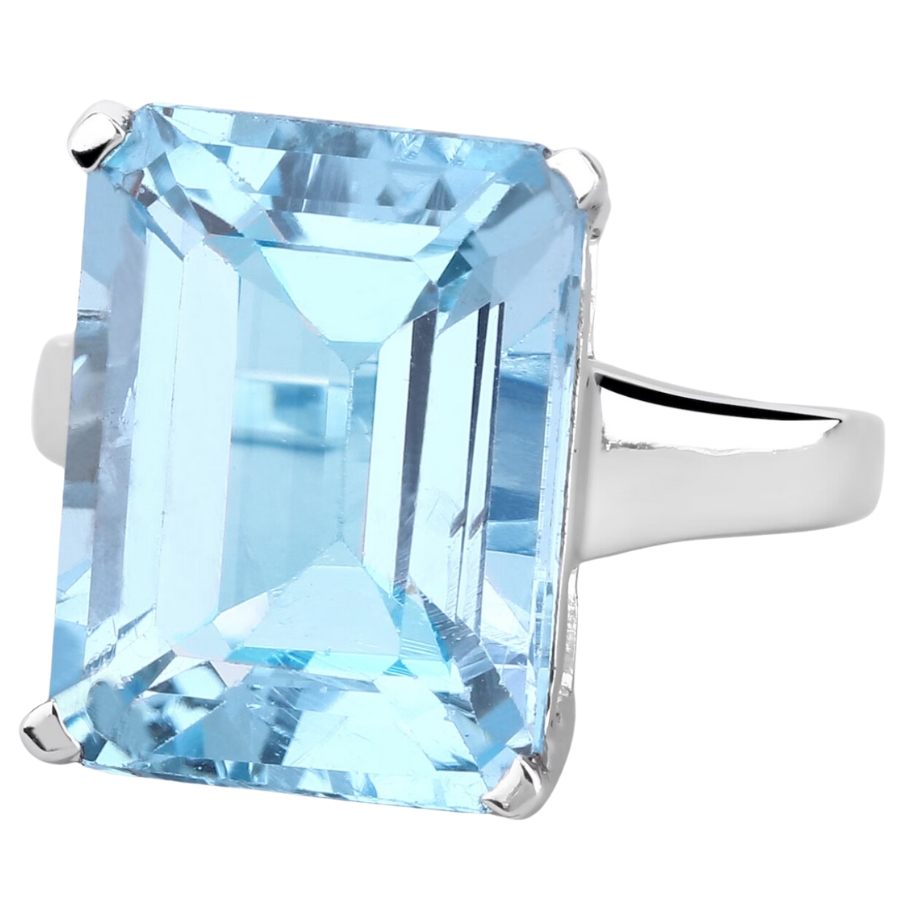
Blue topaz is a lovely gem known for its bright blue color. People have loved it for hundreds of years. The ancient Egyptians and Romans thought it could protect them.
Topaz gets its name from the Greek word for St. John’s Island in the Red Sea, also the name of the place where the yellow stone was found. The name stuck, even though that stone probably wasn’t a topaz.
When it comes to its features, blue topaz is a tough stone that works well for all kinds of jewelry. To show off its color and brightness, it’s often cut into different shapes.
It’s found in many places worldwide, such as the United States, Mexico, Brazil, and Sri Lanka. It’s pretty rare in its original state, though, so most of the stones on the market have been treated to make them look better.
Plus, blue topaz is cheaper than other blue stones like sapphire, so people like it for both its beauty and its worth.
Cavansite
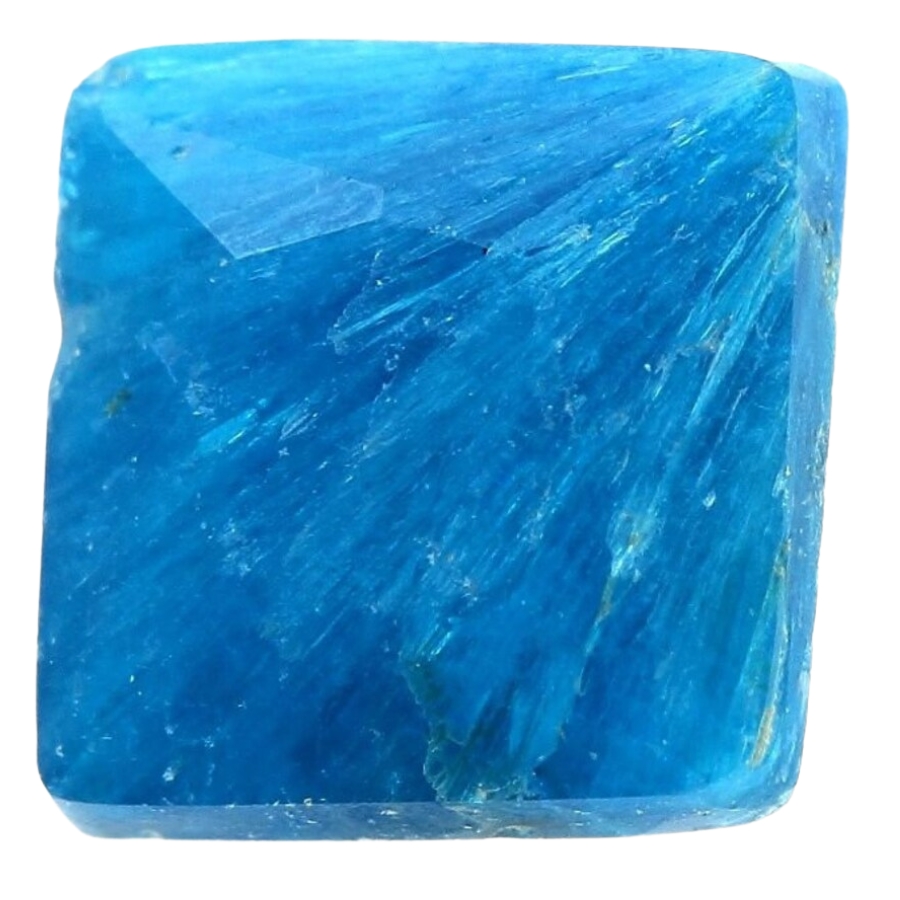
Cavansite is one of a kind and beautiful. Its bright blue color makes it stand out. It’s a pretty new gem compared to others that have been around for hundreds of years. It was found in Oregon, USA, in the 1960s.
Its name comes from the three elements that make it up: silicon (Si), calcium (Ca), and vanadium (V).
The deep blue color of cavansite is what makes it unique. It’s often called “electric” or “vibrant.”
It’s important to be careful when handling cavansite because it’s a soft gem. You can mostly find it used to make beautiful jewelry. Mineral lovers also like it because of its unique color and crystal formations.
Most of this rare gem is found in India, in the Deccan Traps, a big area of pumice rock. Due to its beautiful color and low availability, cavansite is highly sought-after. It can be a real prize to find a piece of it.
People like cavansite because it looks nice and they think it helps them think clearly and get ideas.
Indicolite
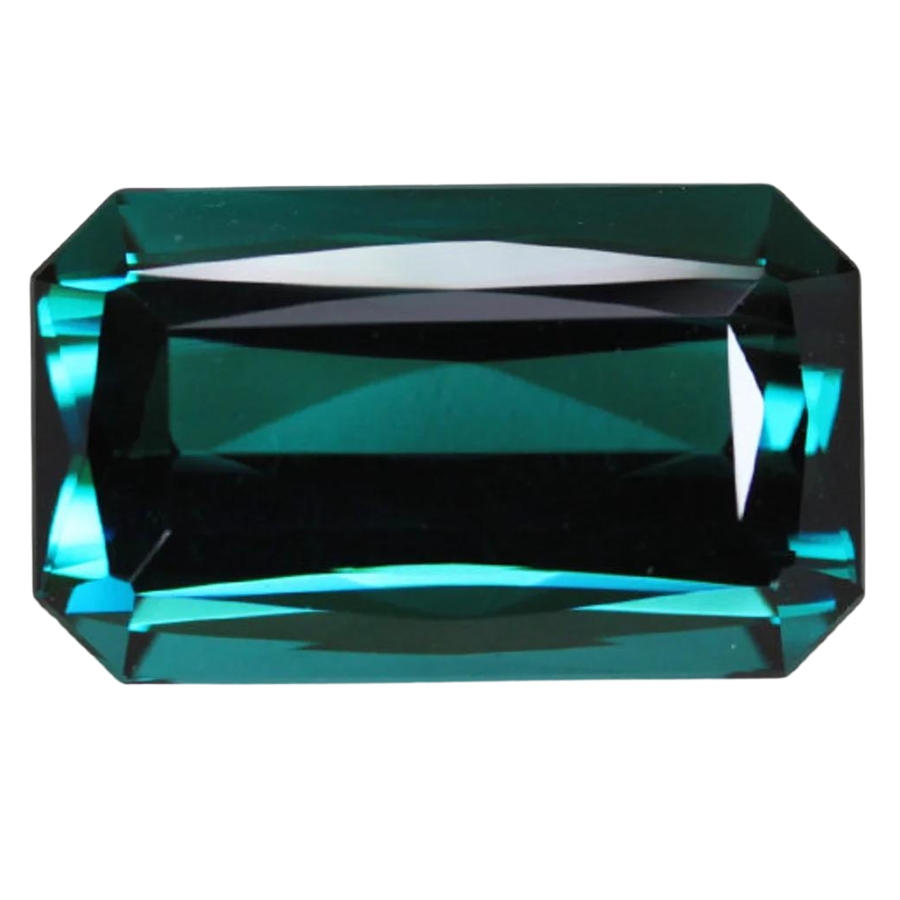
Indicolite is a rare and interesting gem that is known for its beautiful dark blue colors. Its deep blue color, which is similar to indigo dye, is where the name “indicolite” comes from.
This gem is a blue type of tourmaline, which is a crystal family that comes in many colors.
Indicolite is great for rings, necklaces, and earrings because it’s very sturdy. Its bright blue color stands out, which makes it a lovely choice for unique pieces.
It can be found in many places worldwide, such as Brazil, Africa, and Afghanistan. But not many people have it, which makes it more valuable and appealing. Brazil is known for its bright blue stones, and the best indicolite comes from there.
The unique beauty and scarcity of indicolite make it so valuable. It’s not only beautiful, but also rare in jewels because of its deep blue color.
Teal Moissanite
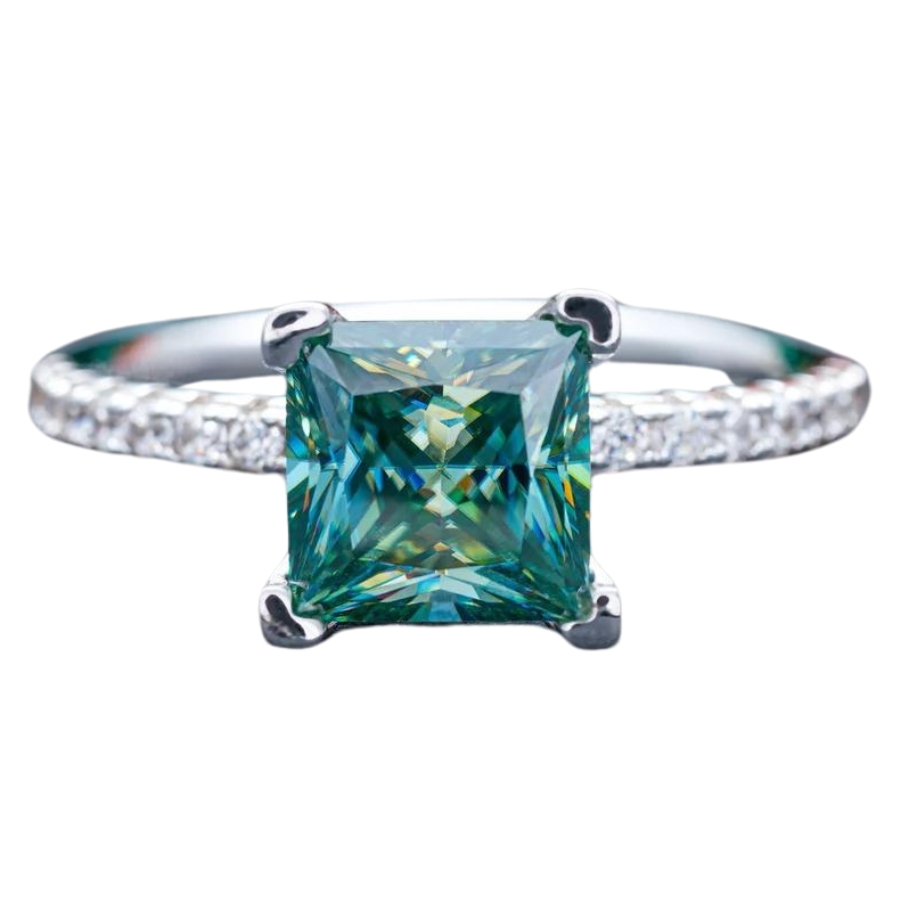
The unique color and sparkle of teal moissanite make it a beautiful rock that is becoming more and more popular. It’s a unique type of moissanite, a stone that was found in a meteor hole by scientist Henri Moissan for the first time in 1893.
People used to think moissanite was a diamond because it looked so much like one, but it’s actually made of silicon carbide.
The name “teal” comes from the beautiful blue-green color it is, and the name “moissanite” comes from the scientist who found it.
It’s cool that it sparkles more than diamonds! It’s really shiny and lights up the room, making it look like it’s sparkling.
It’s very hard, almost as hard as diamonds. This makes it great for making all kinds of jewelry. It stays shiny and lasts long, so it’s a great choice for rings, bracelets, and earrings.
While teal moissanite is beautiful, it’s also less expensive than diamonds, which is why many people love it. Plus, the color makes it look modern, so people who want something different and eye-catching like it.
Vivianite
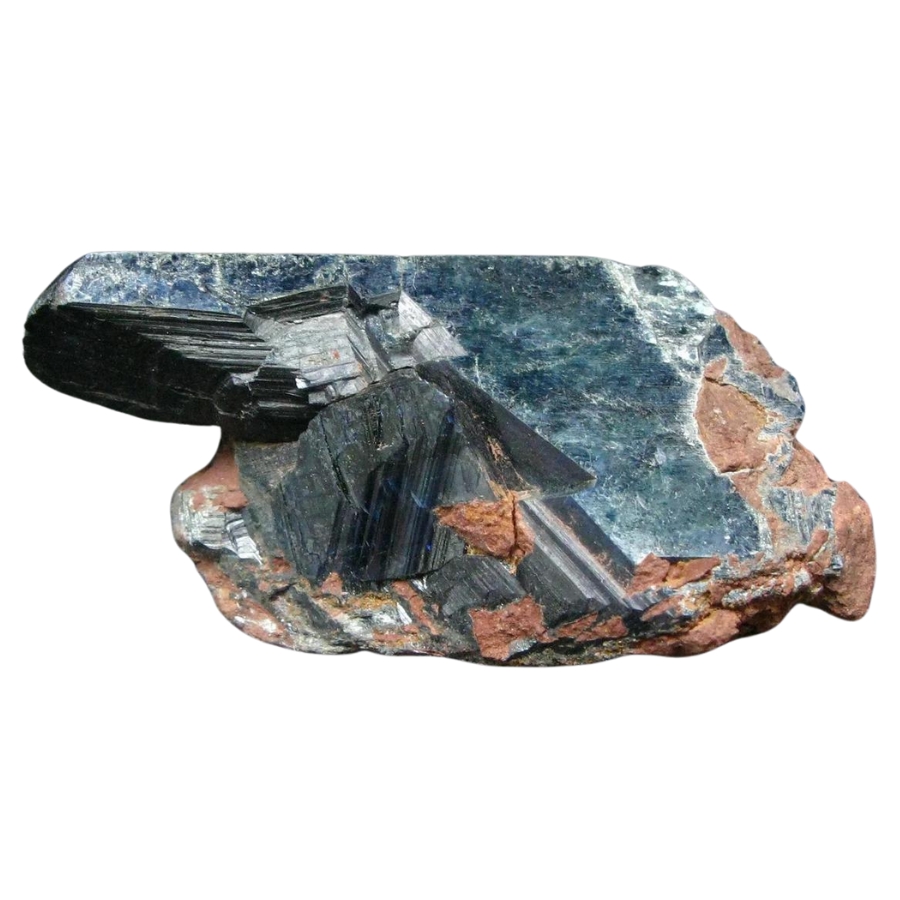
Vivianite is known for its deep blue or green color. It was named after John Henry Vivian, a mineralogist who studied it in the 19th century.
This gem is pretty unique because its color can change from almost clear to dark blue or green when exposed to light.
Vivianite is a soft and delicate gemstone. Because of its softness, it’s not commonly used in jewelry like rings or bracelets. Instead, it’s often kept in collections or used in special, protective settings where it won’t get scratched or damaged.
This gemstone is found in places where iron minerals are, like in old mines or bogs. Some famous spots for vivianite are in Russia, Bolivia, and the USA. It’s often found in small quantities, which makes it quite rare and sought after by collectors.
What makes vivianite valuable is its rare and changeable color. Its ability to go from clear to dark blue or green is fascinating and unusual in the world of gemstones. For those who love unique and rare minerals, vivianite is a real treasure.
Dark Teal Crystals
We find the beauty and mystery of these deep ocean-blue gems in the magical world of dark teal crystals. Their hypnotic colors, which mix the darkest blues with lush greens, are both beautiful and have interesting meanings.
Alexandrite
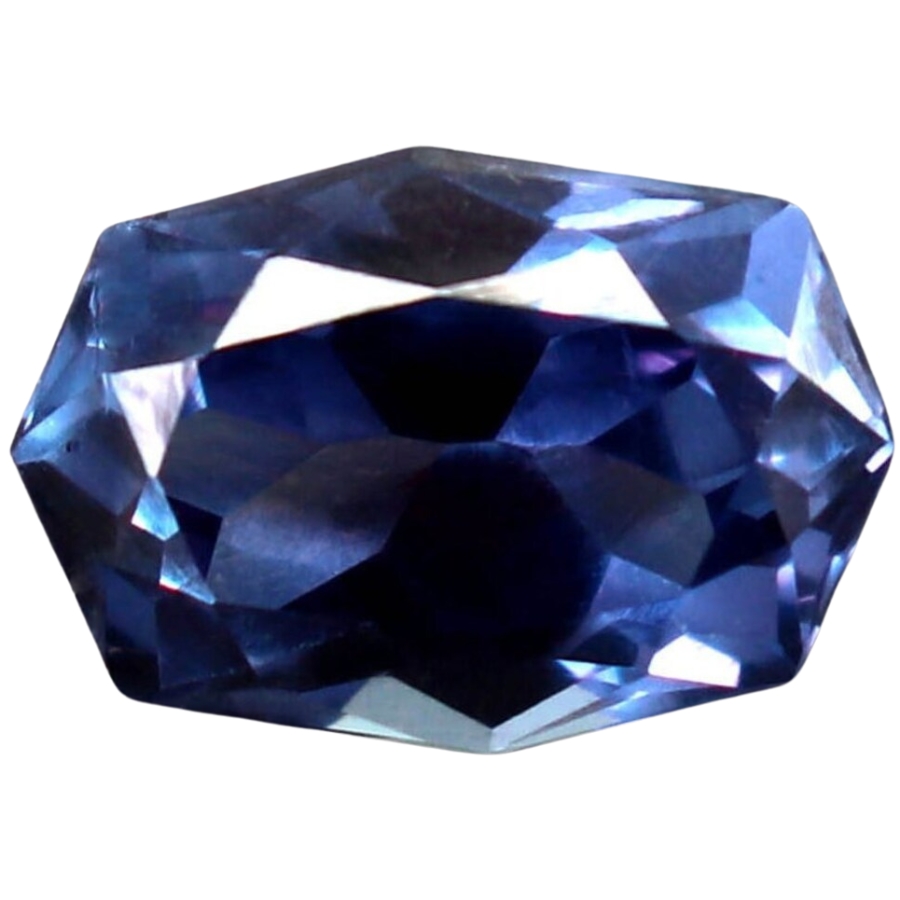
Alexandrite is a rare and interesting rock that is known for changing colors in amazing ways. It was found in the Ural Mountains of Russia in the 1830s and named for Tsar Alexander II.
When exposed to light from a lamp, this gem’s color can magically change from green to a reddish-purple hue.
Because alexandrite is so hard, it lasts a long time and is great for making all kinds of ornaments. It’s very uncommon, though, so it’s generally found in smaller sizes.
Its ability to change color really stands out in rings, bracelets, and earrings, which is why jewelers love to use it.
It’s hard to find alexandrite. When the first source in Russia almost ran out, more was found in Brazil, Sri Lanka, and East Africa. Even so, it’s not common, which makes it one of the most expensive gems.
Alexandrite is valuable because it’s rare and changes colors in a way that no other stone does. This makes it a lovely gem to wear and a valuable item to gather.
It’s very rare and sought after because of the way it changes colors. It’s like having two gems in one.
Blue Apatite
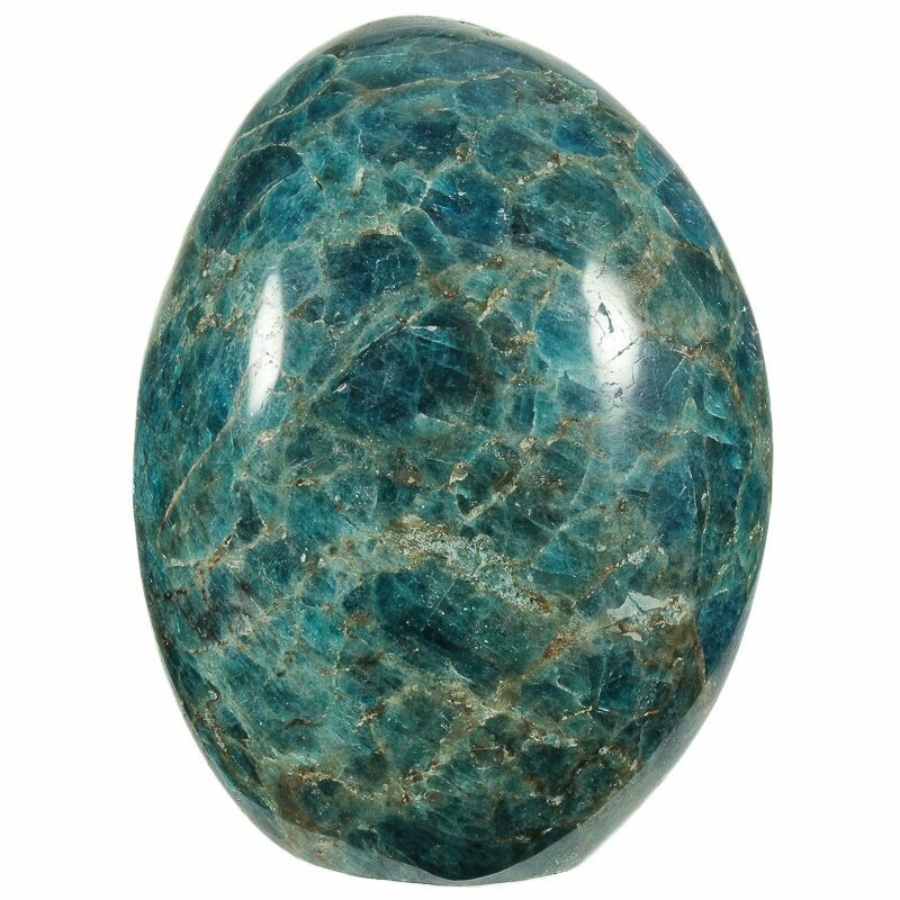
The bright blue color of blue apatite makes it a beautiful rock. The color is soft, pale blue, or deep blue like the sea.
Apatite gets its name from a Greek word “to trick” because it was often mistaken for other crystals, like aquamarine and peridot.
Because it’s not as hard as some other gems, blue apatite needs to be handled carefully so it doesn’t get scratched. It’s used in necklaces, bracelets, and earrings, among other things, but it’s usually set in patterns that protect it.
Numerous places around the world have blue apatite. Some of the most important sources are Russia, Madagascar, and Brazil. The fact that blue apatite is found in different shades in different places is interesting.
The unusual blue color of blue apatite makes it valuable. This color is not often found in other jewels. Its link to conversation and personal growth makes it even more appealing, and people want to use it in jewelry and spiritual practices.
Lazulite
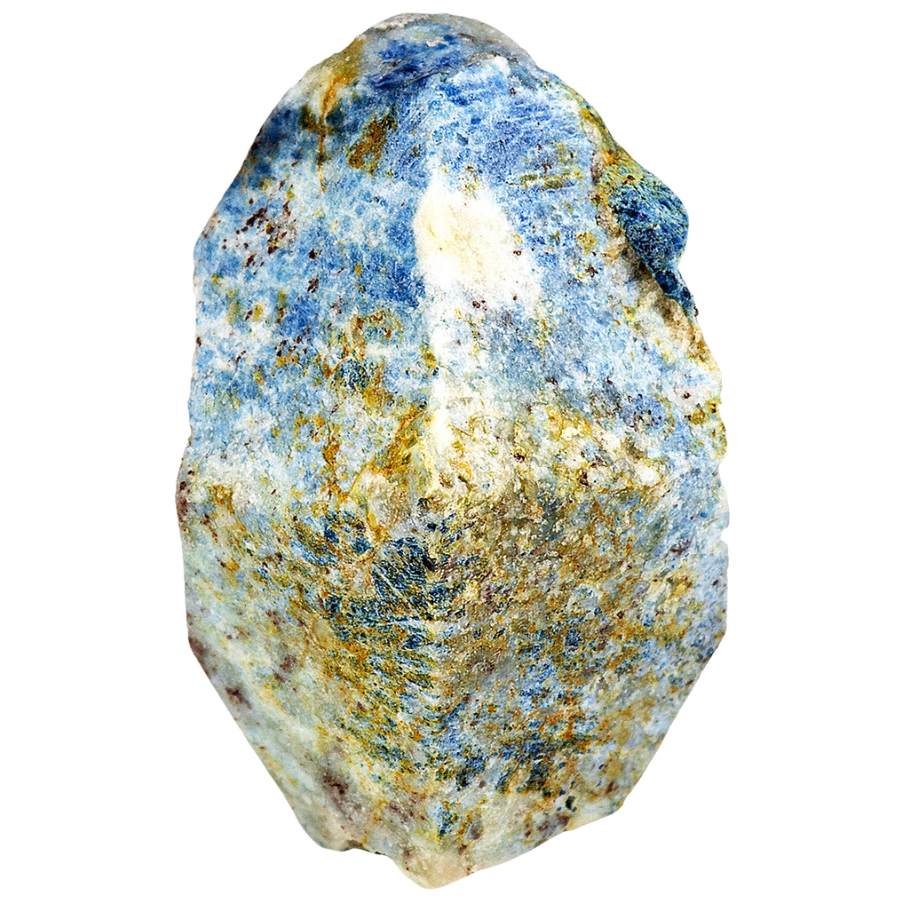
Lazulite is an interesting stone that is a deep blue color that can sometimes have a hint of green to it. The word “lazuli” comes from the beautiful blue color of the stone.
The 18th century was the first time this stone was known, and people have loved it ever since.
This stone is pretty tough, but it’s not often used in jewelry because it gets scratched so easily. Fans of minerals who love the deep blue color of lazulite are more likely to collect it as a piece.
Along with Austria, Brazil, and the United States, especially in Georgia and Montana, they can be found in other places around the world. But this material isn’t very common, which makes it more valuable when you do find it.
Lazulite is valuable because of its unique blue color. Because it’s so rare, it’s a perfect gift for collectors and people who are interested in gemstones.
Blue Zircon
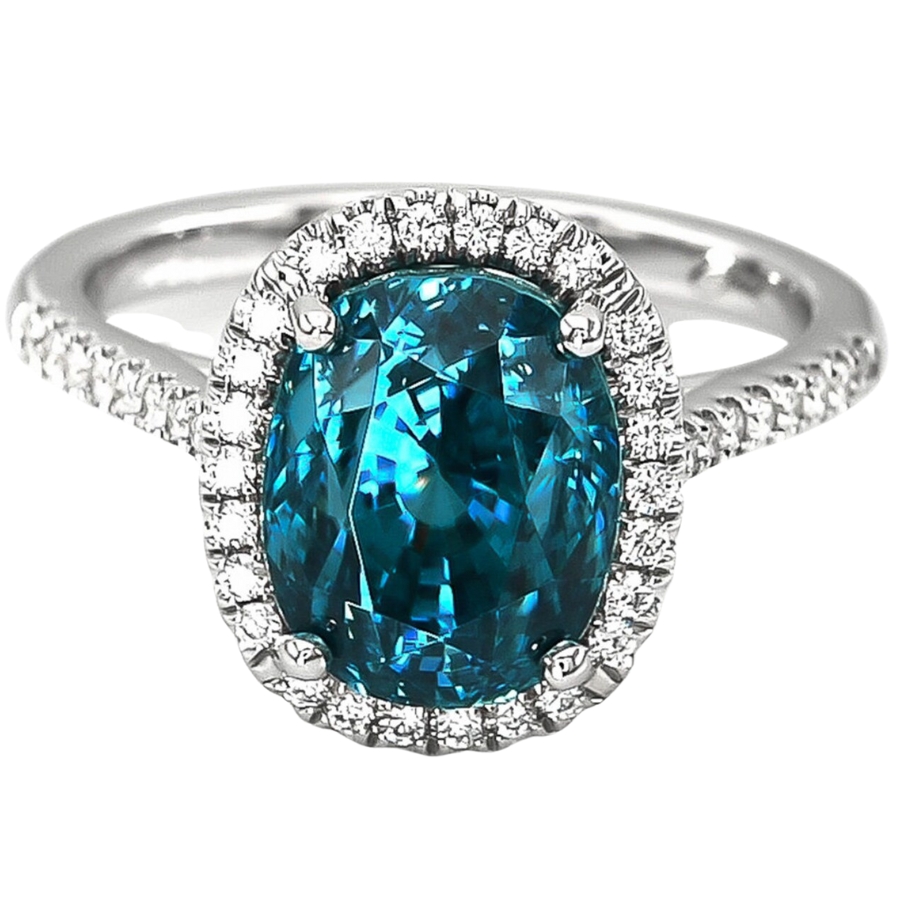
Blue zircon is a real stone, even though its name might make you think of fake gems. It has been around for more than 4 billion years, making it one of the oldest rocks on Earth.
The word “zircon” comes from the Persian word “zargun,” which means “gold-colored.” However, blue zircon is not at all gold-colored. People love this gem because of its bright blue colors, which can range from light to deep and vivid.
People have always liked blue zircon because it sparkles and has a lot of color.
There is a lot of wear and tear on blue zircon, which makes it great for rings and chains. It shines brightly and fierily, making it sparkle a lot, almost like a diamond.
You can find this stone in Cambodia, Sri Lanka, and Thailand, among other spots. Cambodian blue diamond is the most valuable because of its deep, bright color.
Many people love blue topaz because of how bright and colorful it is. Not only is it pretty, but people believe it brings good energy and happiness.
Because blue zircon is so rare and needs to be cut with skill, it’s a valuable gem that collectors and jewelry fans both love.
Light Teal Crystals
Light teal gems stand out among the sparkling crystals because of their soothing mix of soft blue and green colors. These small stones have a special appeal. They are like calm, shallow water and early spring skies.
Chrysoprase
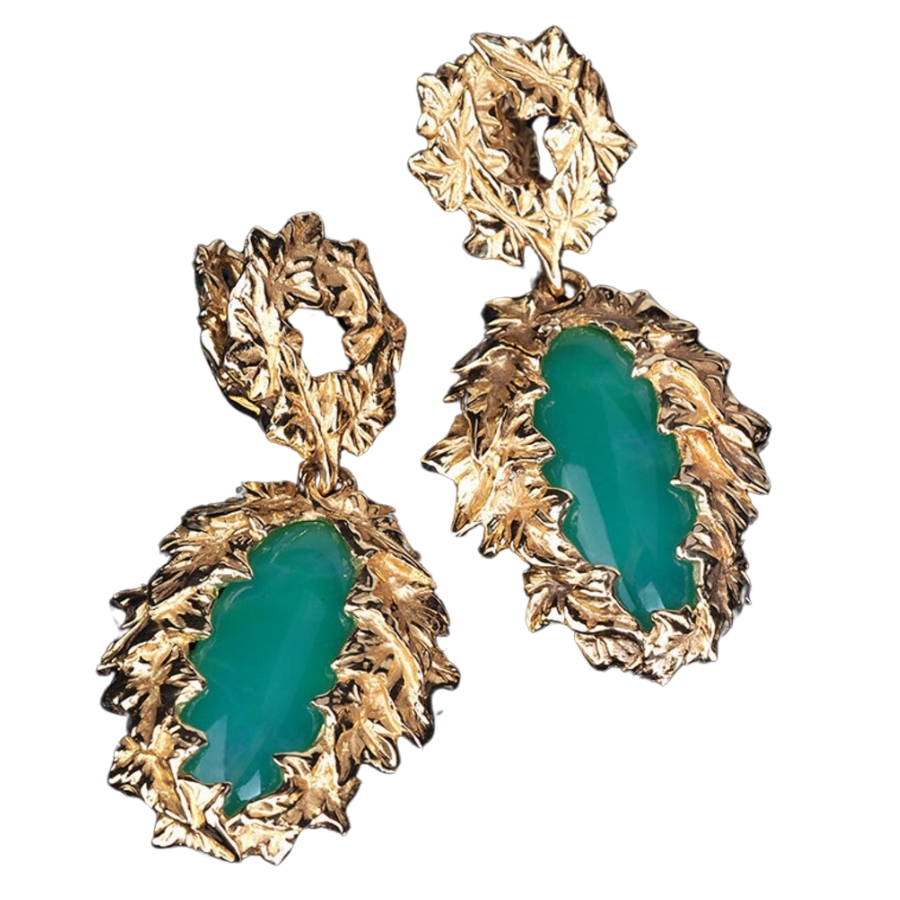
Chrysoprase is a beautiful and unique gemstone, known for its striking green color that can range from light, minty green to a deeper apple green.
This gem’s name comes from the Greek words ‘chrysos’, meaning ‘gold’, and ‘prason’, meaning ‘leek’, referring to its green color with hints of gold.
The Greeks, Romans, and Egyptians all admired chrysoprase in antiquity. Today, people think it helps with emotional balance, attracting positive vibes and warding off negative feelings.
In terms of properties, chrysoprase is a type of chalcedony, which means it’s quite durable and good for everyday wear. It’s often used in all kinds of jewelry, like necklaces, bracelets, and rings, adding a fresh splash of color.
You can find chrysoprase in several places around the world. The best-quality chrysoprase usually comes from Australia, but it’s also found in Brazil, Russia, and the United States.
People value chrysoprase for its vibrant green color, which isn’t very common in other gemstones. Plus, because it’s more affordable compared to some other green stones like emerald, it’s a great option for those who love colorful jewelry.
Fluorite
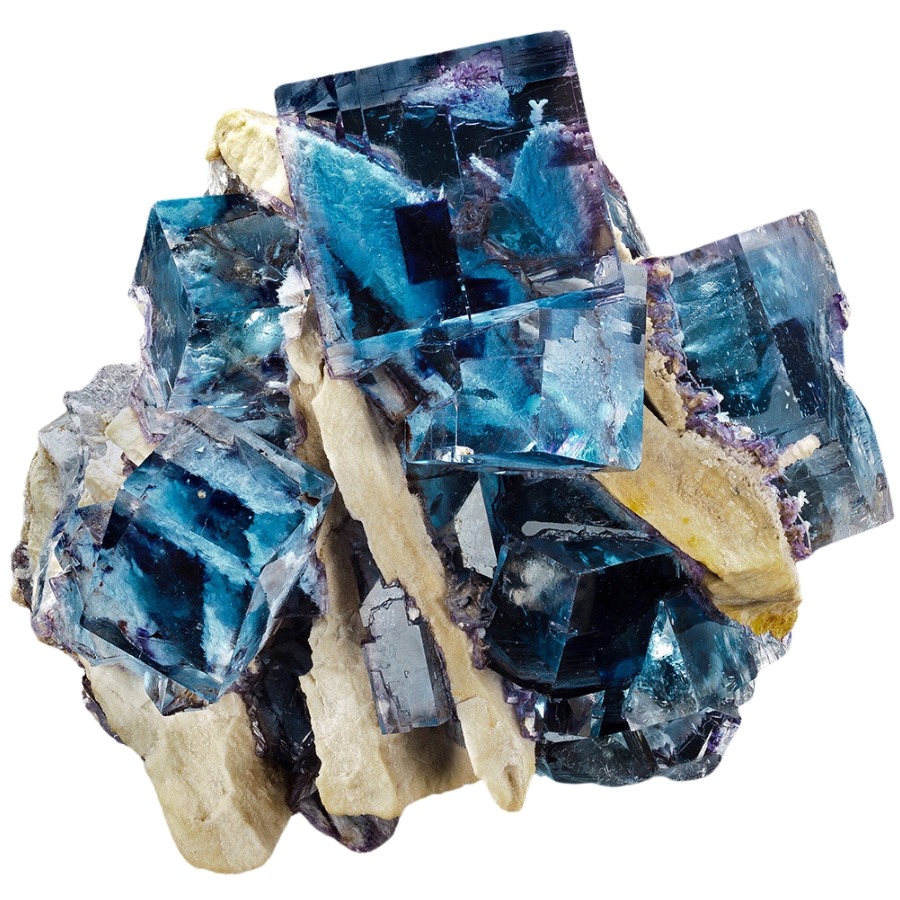
Fluorite is a cool stone that can be any color you can think of, but the most beautiful colors are the purple, green, and blue ones. Its name comes from the Latin word “fluere,” which means “to flow.”
This name was picked because fluorite is easy to melt and was used in mining to help melt metal.
For a very long time, this gem has been around. The Romans thought that drinking wine from a fluorite dish would keep them from getting drunk.
Fluorite isn’t very hard, so be careful when you work with it. It’s mostly used to make statues, vases, and other pretty things for decoration. It’s also sometimes used to make jewelry, but it needs to be kept safe from scratches and hard hits.
It’s found all over the world, but China, Mexico, and South Africa are where you can find the most of it. Fluorite is found in many places, and each one makes a piece that is completely unique.
People love fluorite because it has beautiful colors and they think it can help them think more clearly. Because it comes in so many colors and patterns, each piece is also unique, which makes it very appealing to gem and jewelry lovers.
Peruvian Opal
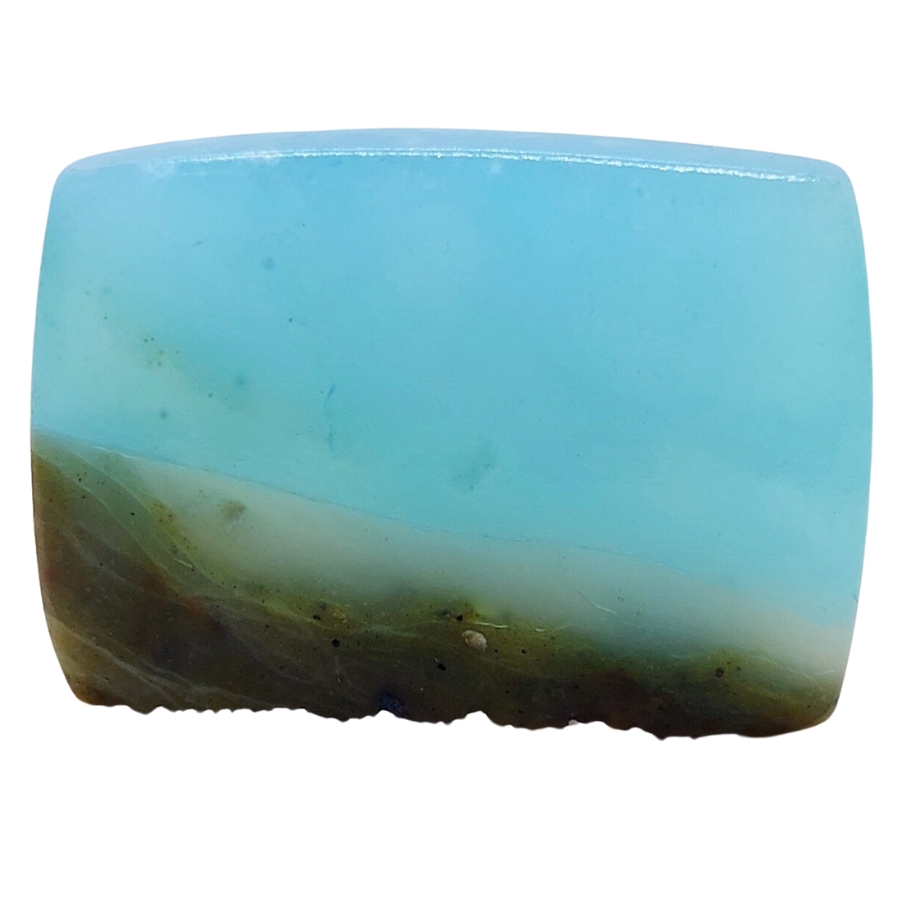
The name “Peruvian Opal” comes from the fact that this beautiful stone is mostly found in the Andes mountains of Peru. Peruvian Opal is a beautiful soft blue or green stone that looks a bit like the ocean.
It’s not as flashy as other opals. It’s not as sparkly as some other opals, but the peaceful colors make it stand out.
This gem has a long past in Peru, where it’s known as the “national stone.” The Incas thought it was a gift from Pachamama, who was the first Inca Goddess of Mother Earth and Fruitfulness.
Because Peruvian Opal isn’t as hard as some other gems, it’s not often used in rings or bands that get knocked around a lot. It works better as a charm or earring, where it can be shown off without getting broken.
The San Patricio area of Peru is where you’ll find most of the colored stones that come from Peru. It doesn’t happen very often outside of this area, which makes it even more special.
Sillimanite
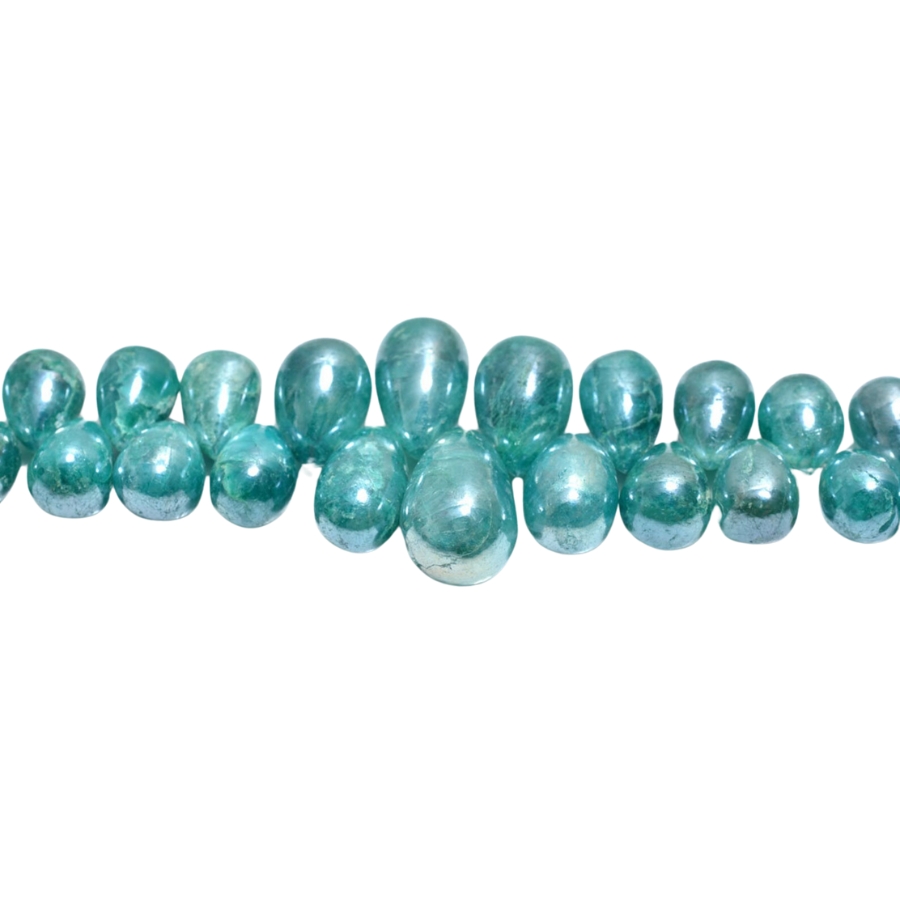
The interesting gem called sillimanite is named after the well-known American chemist Benjamin Silliman. It’s one of a kind because it can change into other minerals in different situations. It’s a cool example of how nature works.
Some stones have been used for a very long time, but this one hasn’t. It’s just becoming more popular because of how beautiful and unique it is.
This stone is very hard, which makes it great for making many types of jewelry. People love how smooth and shiny it is, almost like a pearl.
It comes in many colors, such as green, blue, and brown. It’s not very popular in jewelry stores, though, since it’s not very well known yet.
It’s found all over the world, but the US, Brazil, and Europe are three of the most important places to find it. It has also been found in Sri Lanka, Myanmar, and some other places in Asia.
Smithsonite
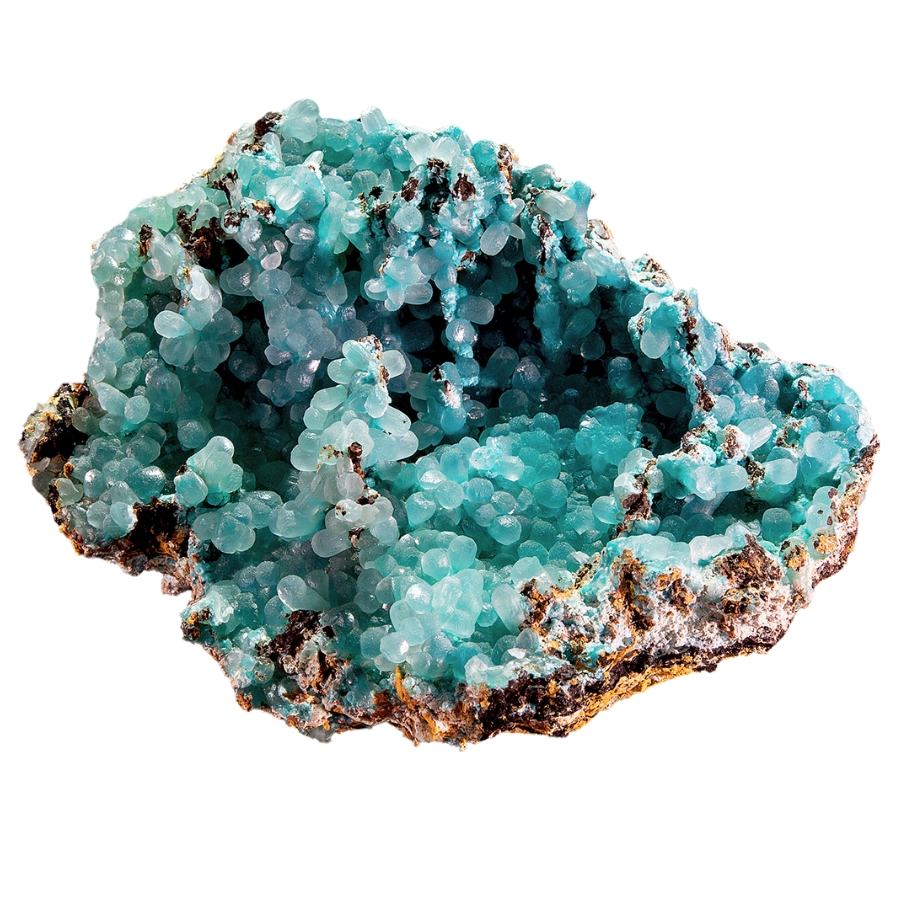
Smithsonite has soft, pastel colors and a smooth, shiny surface. In honor of James Smithson, who started the Smithsonian Institution in Washington, D.C., this mineral was named after him. Smithson was a scientist who studied rocks.
Gemstones like diamonds and rubies are harder than this one. To keep it from breaking, it’s not usually used in rings or other metal that gets bumped around a lot.
But it’s great for earrings or pendants instead. When Smithsonite is cleaned, it has a beautiful pearly sheen that makes it look absolutely stunning.
Smithsonite can be found in countries like Greece, Australia, and Mexico. It’s not very common, though, which makes it more special for fans.
Numerous people like smithsonite because it’s thought to have a calming effect on them. For example, pink, blue, green, and yellow are some of the pastel colors that make each piece special.
Crystal and gem collectors think that finding a smithsonite piece is like finding a secret treasure.
Turquoise
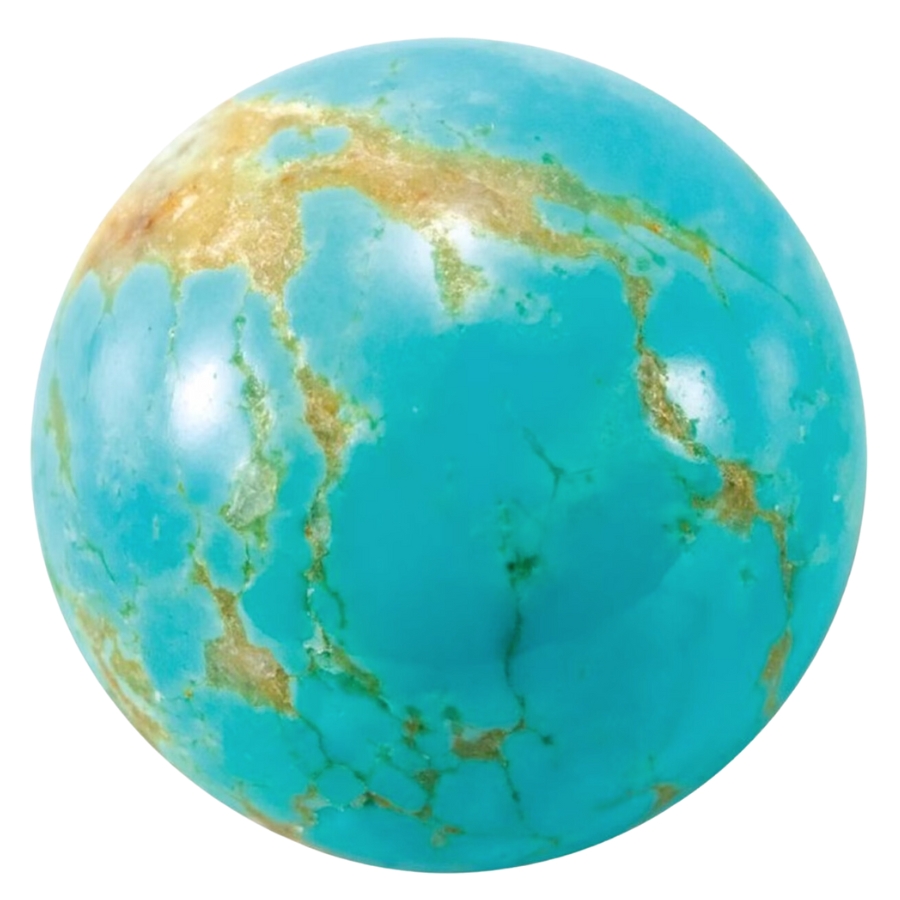
The beautiful blue-green color of turquoise makes it a well-known gem. People have loved it for a very long time. The Egyptians, the Persians, and the Native Americans among others.
This stone was first brought to Europe through Turkey, which is where the word “turquoise” comes from.
People say it stands for knowledge, peace, and hope. That is why it’s often found in charms and amulets.
Because turquoise isn’t very hard, it’s easy to scratch. It’s still used a lot in rings, bracelets, and chains, though. Each piece of turquoise jewelry is unique because of its color and pattern.
Iran, the southwestern United States, and Mexico are some of the best places to get turquoise. People from these areas are known for making the most beautiful, high-quality turquoise.
People love blue because it’s a beautiful color and they think it makes them feel good. It’s not just a pretty stone; it has a long past and is important to many cultures.

